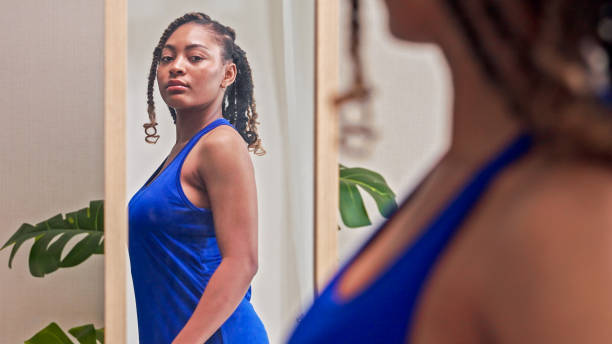
If Your Nipples Could Talk…
To put it another way, they would say this about your physique.
However, you are well aware that your nipples are responsible for more than simply feeding a newborn. Nipples may provide you with information about what is going on within your body, which is something you might not know.
Here is a list of seven essential facts you should know about your nipples.
7. Your Nipple Changes Over Time
If you have sudden dimpling or puckering of the skin around or on your nipple, particularly if it happens around only one nipple, this might be an early warning sign of breast cancer.
Tune into The Ask Dr. Renee Show with Dr. Ryland Gore to learn more about breast health
Now, here are some nipple changes you do need to concerned about:
Nipple retraction: You may feel like your breast skin is being pulled inward, and you may notice that your nipple is actually pulling inward too. This could be a sign of a cancerous lump. It may also cause redness, scaliness, or thickening of the nipple or breast skin.
6. Hairy Nipples Are Normal
Do you know that the little lumps that are located around the nipples are really hair follicles? It is possible to pluck, trim, or wax the black hairs that are sprouting on your nipples if you find that they are unattractive. But use caution. Also, you should see your physician if the follicles become painful, if they develop in size, or if they become itchy and scaly. Possibly, it is an indication of an infection.
RELATED: “My Breasts Hurt. Should I Be Worried?”
5. Exercise Can Chafe
To guard against this, use a well-fitting sports bra or, use non-chafing balms, or cover your nipples with circular Band-Aids. Visit your physician, however, if you experience symptoms such as redness, scaling, or itching when the only activity you are doing is lifting the television remote control. Perhaps this is an indication of eczema or Paget's disease, which is an extremely uncommon type of cancer that affects the nipple and the areola.
4. Nipple Discharge Is Not As Bad as You Think
It is possible for the majority of women, even those who are not pregnant or nursing, to have a discharge that is milky, bluish-green, or clear if they press their nipples. Make an appointment with a medical expert if you are not squeezing your breasts if the discharge is bleeding, or if it is coming from just one of your breasts. There is a possibility that the discharge is the result of a benign growth, a benign cyst, or breast cancer.
3. Nipples Are Connected to Your Pubic Area
Rutgers University researchers discovered that the feeling that is elicited by stimulation of the nipple goes to the same pleasure areas of the brain as the sensations that are elicited by stimulation of the vagina, clitoris, and cervix. Has your nipple been pierced? There is a possibility that you may lose feeling as a result of nerve injury.
2. Nipple Pain During Breastfeeding Is Normal
Nipples that are burning, cracking, throbbing, or painful are common problems that mothers have when nursing, particularly in the first few weeks of the process. If the discomfort persists, you should seek the advice of a breastfeeding professional since it is possible that your infant is not latching on correctly. Infections and engorged breasts are two more potential causes of nipple discomfort.
RELATED: Eating For Two: A Healthy Breasts Diet
1. Your Nipples May Be Inverted
Connective tissue causes the nipple to retract inward, which results in around fifteen percent of women being born with inverted nipples. A very basic surgical operation may be performed in around one hour to fix it. In contrast, if your nipples that are pointing outward suddenly shift inside, you should make an appointment as soon as possible.








